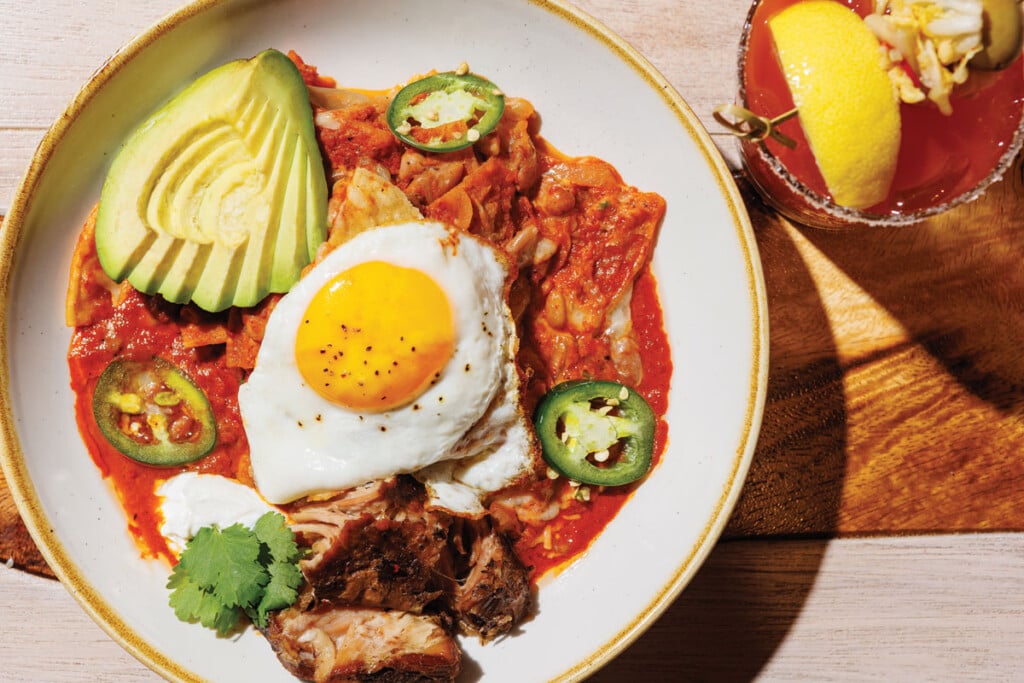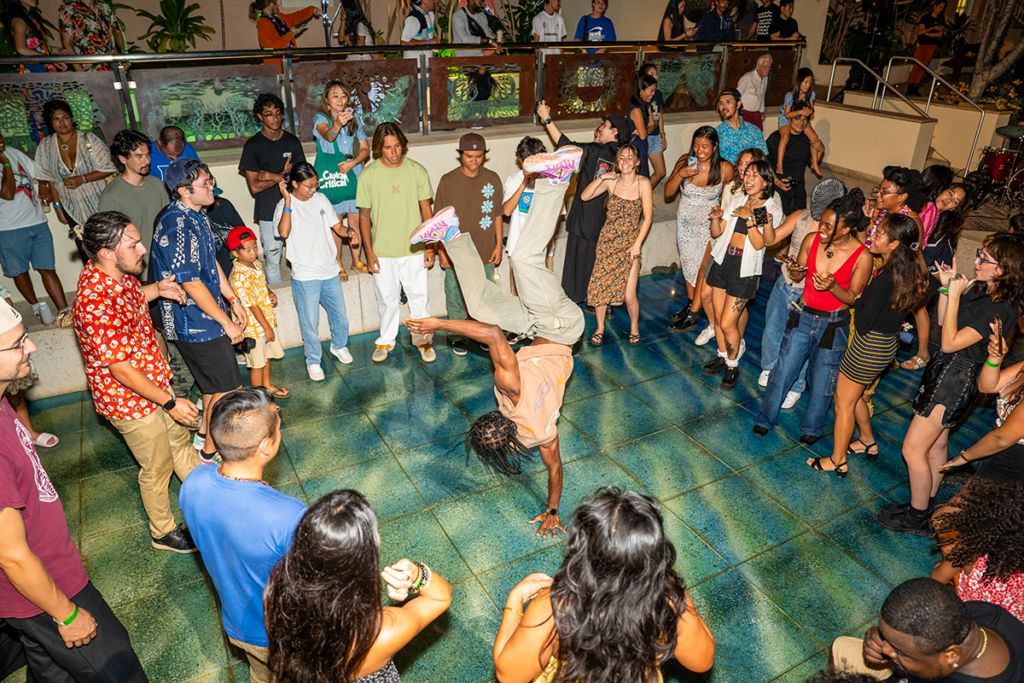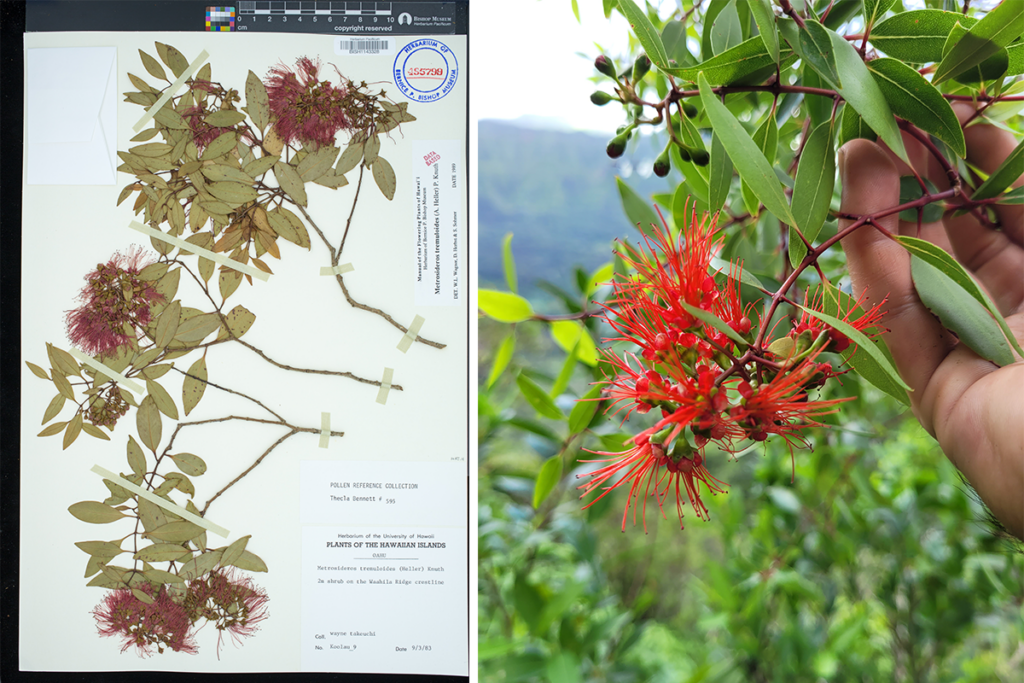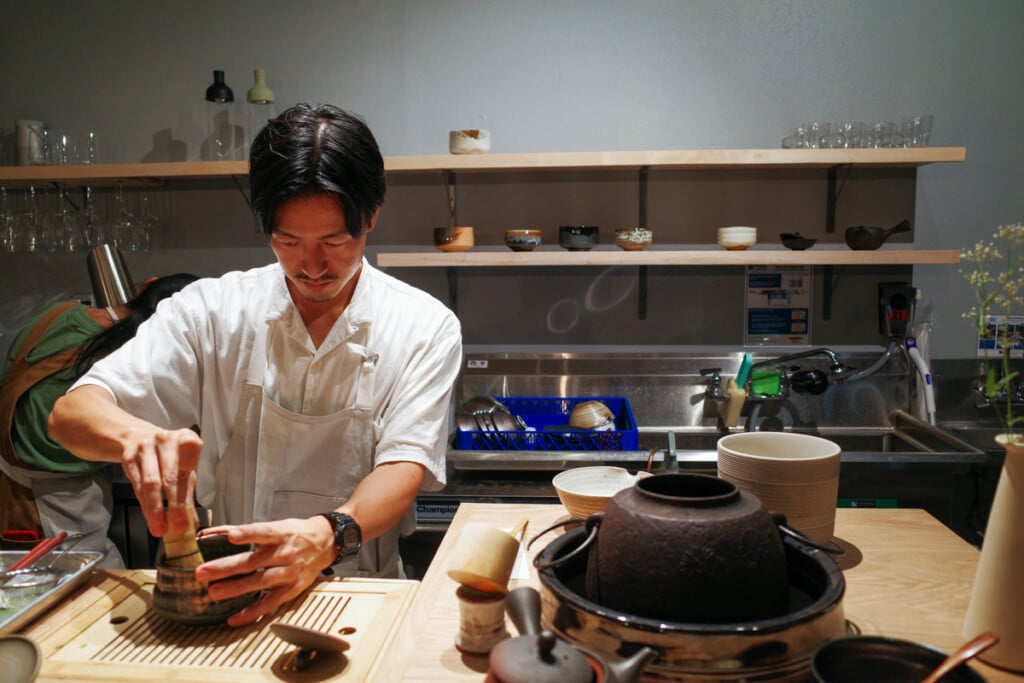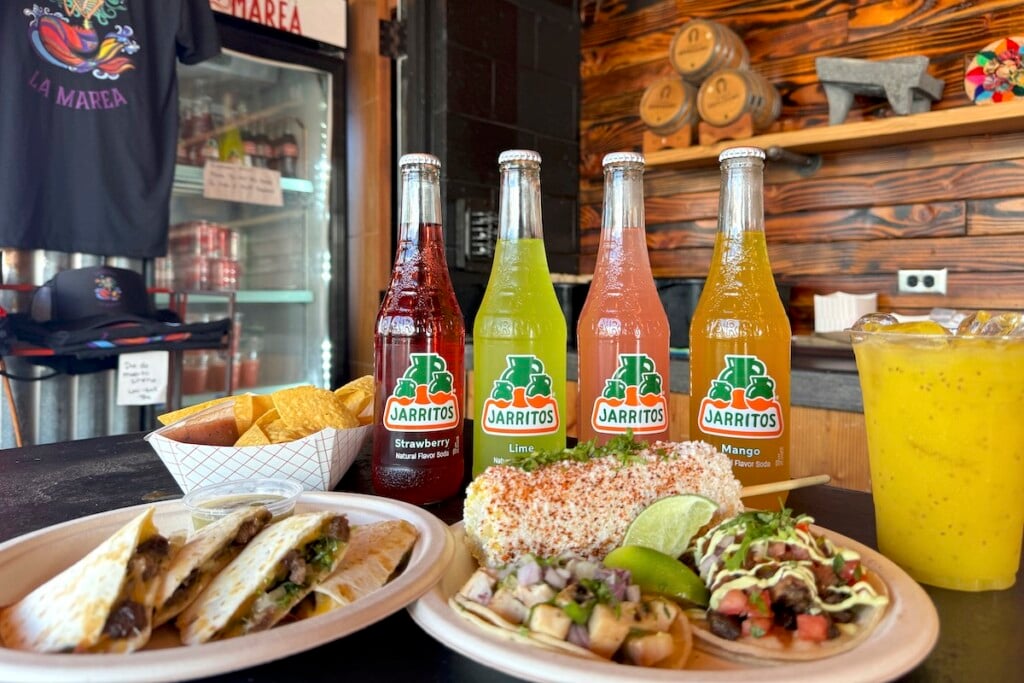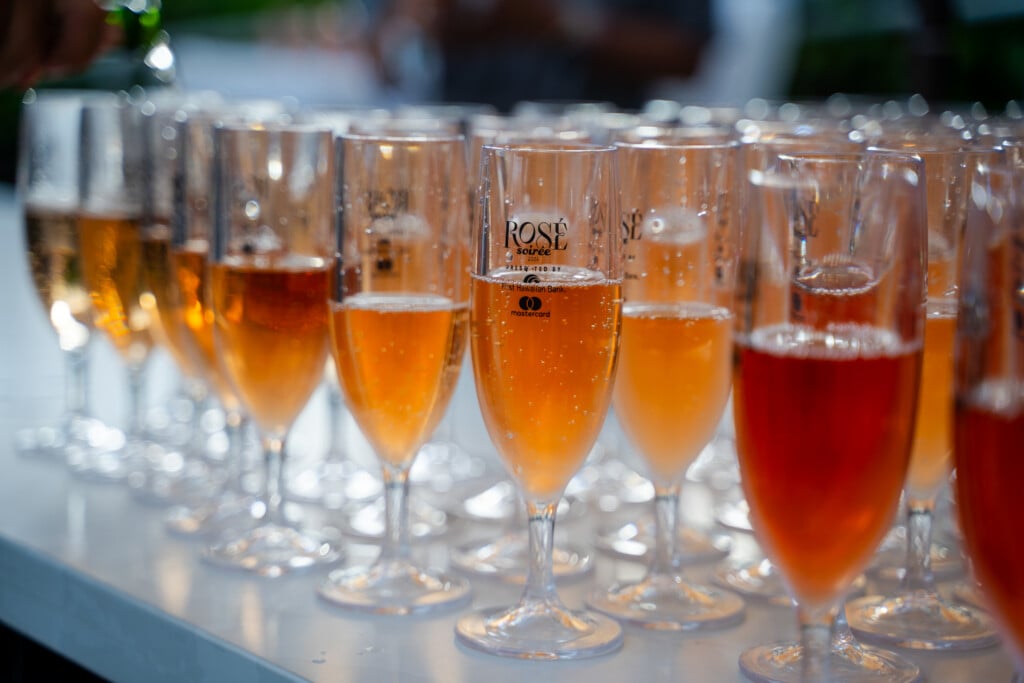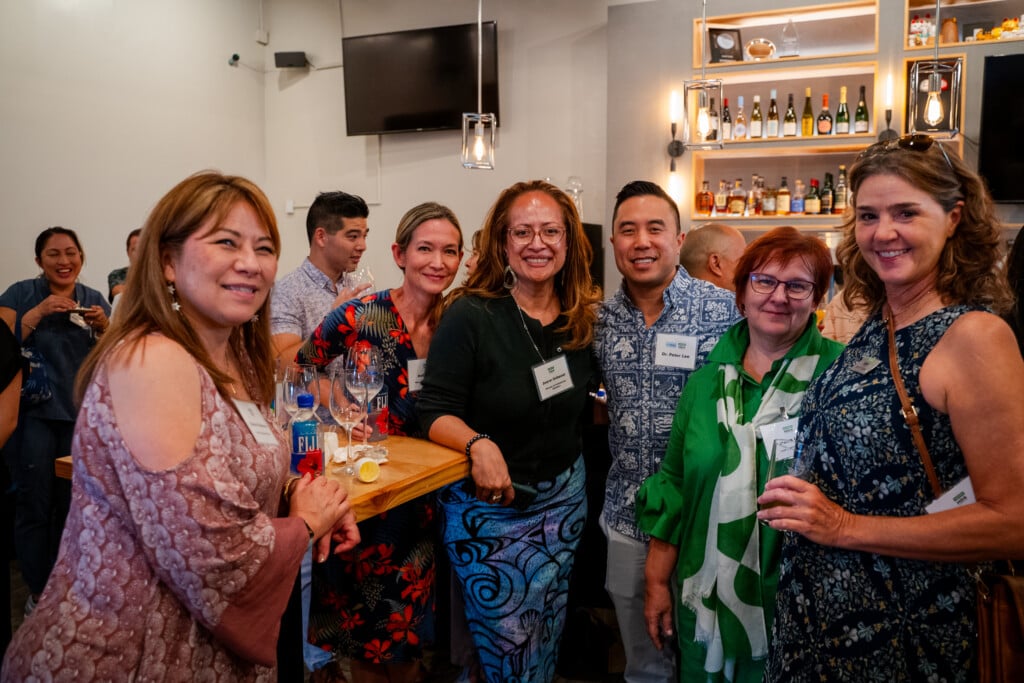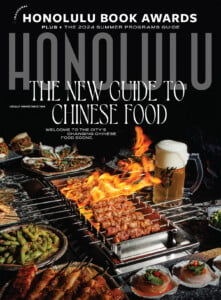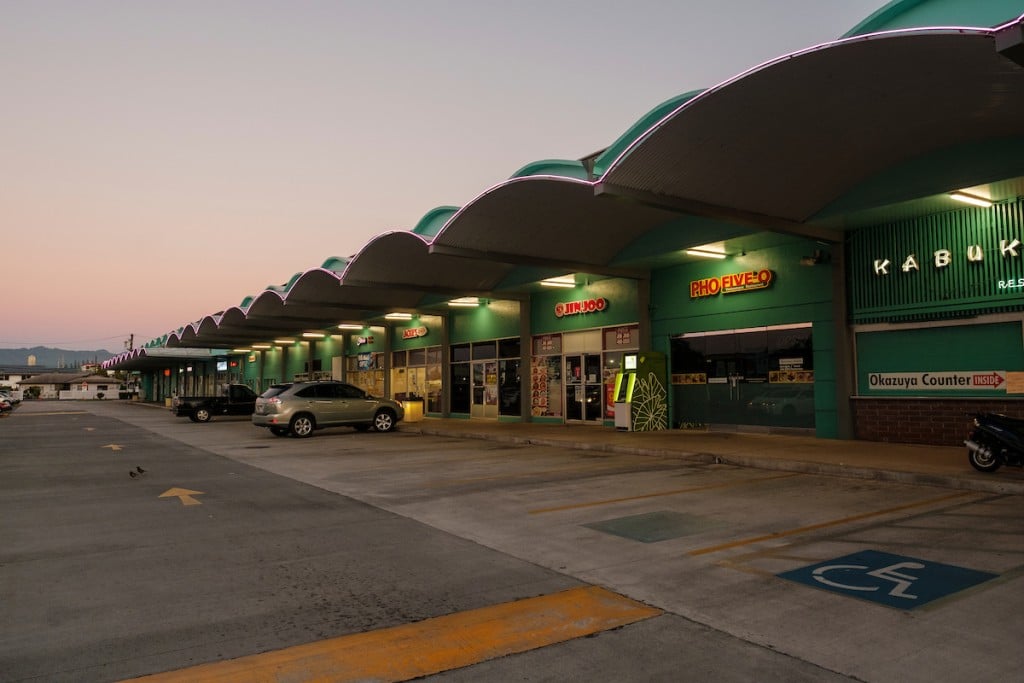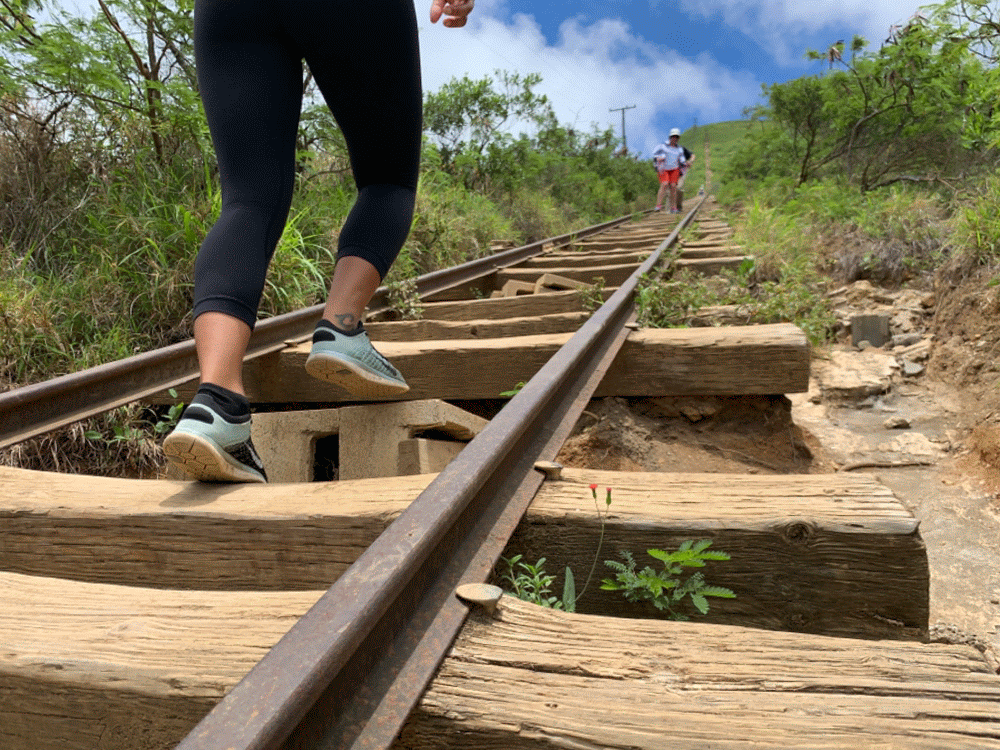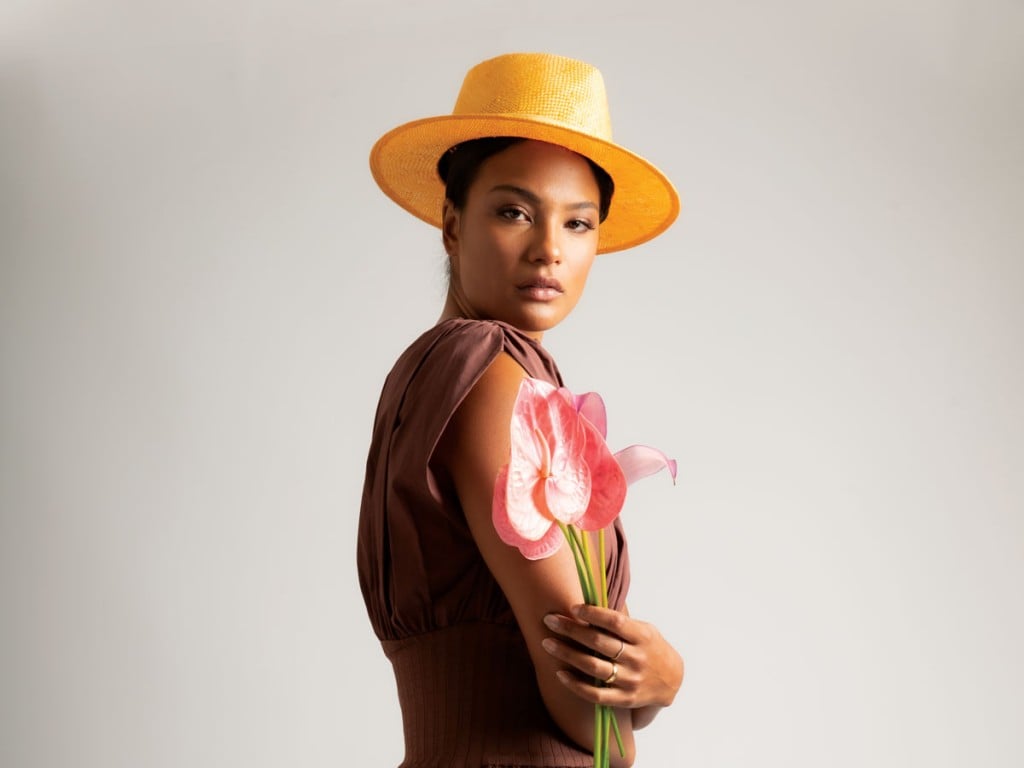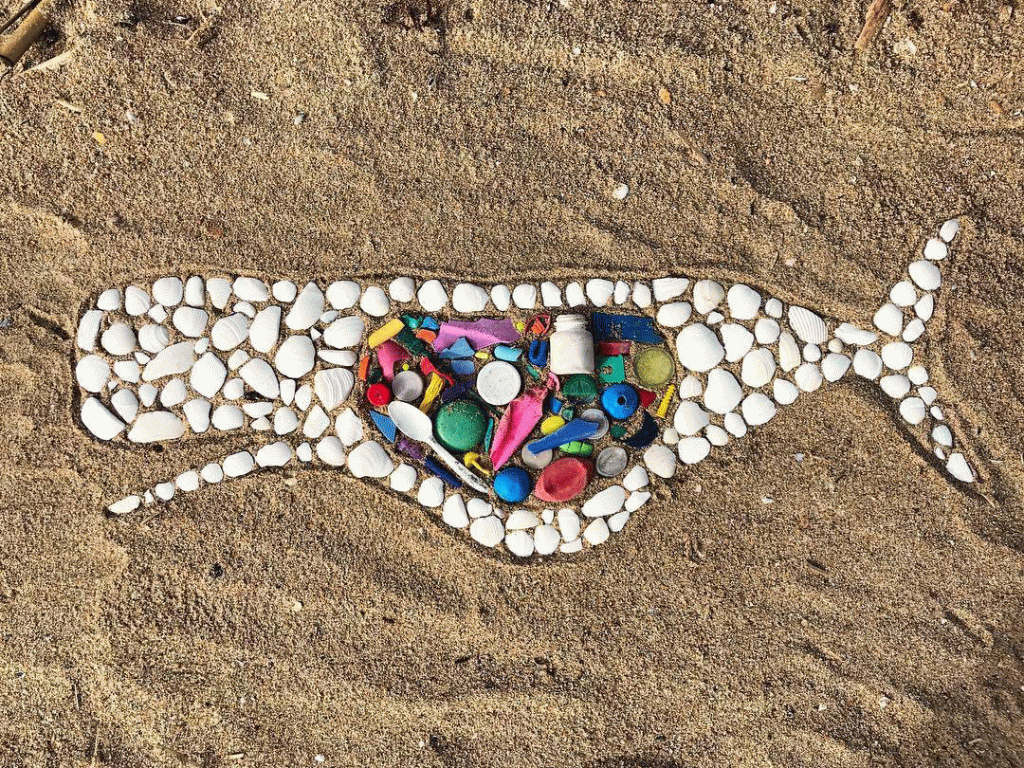Everything You Need to Know About Local Fruit in Hawai‘i
Everyone has a memory about local fruits, from climbing the mango tree in their grandma’s backyard to swapping liliko‘i for avocados with their neighbors. Fruits are part of our history and culture, a way for us to feel connected to our community. And, if you’ve ever had a ripe mango or sweet tangerine, you know there’s nothing else like it.

Photos: Olivier Koning and Steve Czerniak
Culture Club
The right and wrong ways to share local fruit.

Growing up in Pauoa Valley, chef Alan Wong remembers his neighbor’s huge Haden mango tree, and how the branches would bend into his family’s yard.
“I nevah know, my mother nevah know, whose mango that was,” says the James Beard Award-winning chef, smiling at the memory. “So we just pick ’em anyway. We figure it was on our side of the yard, we pick up the leaves, must be our mangoes.”
It’s a common story for anyone who’s grown up in the Islands. Backyards in many neighborhoods had fruit trees—lychee, mango, papaya, banana—and most people happily shared the bounty. You’d find a bag of oranges outside your front door from a neighbor or a basket of mangoes at work from a co-worker.
Fewer people keep fruit trees these days, chopping them down to end the ongoing upkeep or building extensions to the house that cut into yard space.
Today, the taste and smell of local fruits remind many of us of days long past, of simpler times. Sharing fruits was a tangible way we connected with our neighbors, felt part of a larger community.
Chef Mark “Gooch” Noguchi remembers a prolific tangerine tree growing in his grandparents’ yard in Mānoa. He would sell cups of freshly squeezed tangerine juice from a homemade stand on the sidewalk outside the house.
“The thing about fruit is it was a connection we had to our neighbors,” says the chef and father of two. “Small-kid time, we knew everybody on our street. We could come home, wash rice, put on play clothes and go out until the sun went down. Nobody does that anymore.”
Recently, Noguchi was catering an event and was left with an entire case of tomatoes from Ho Farms. His wife, Amanda Corby Noguchi, suggested giving it away to their neighbors in Mānoa. So, one weekend, they packed up the tomatoes and walked the entire street, knocking on doors and meeting the people who lived in their neighborhood.
“A couple of the neighbors remembered me from when I was young,” Noguchi says. “But some told me, ‘I don’t want to buy anything.’ I said, ‘I’m not selling anything. I’m your neighbor, I live on this street and I just want to share.’ Now, we wave at our neighbors every morning. Food really brings people together, period. We forget that.”
SEE ALSO: Kapi‘olani Community College’s Farmers Market Celebrates 15 Years on O‘ahu
But growing fruit trees in your backyard isn’t without problems.
You’ll find complaints on online message boards and hear them at neighborhood board meetings: Thieves raiding fruit-laden trees, climbing over walls and fences to take the coveted fruits. On one message board, a woman desperately asked for advice on how to stop people from stealing her lychee, at all hours of the day and night.
“I caught a woman today who told me she thought she could have some,” she wrote. “I am just about at my wit’s end. I’m almost tempted to strip the tree even though only a few fruit are ripe.”
The responses: Put up signs, install surveillance cameras, get a bigger dog, call the police, bury landmines.
“There’s always a discussion about how to stop or curtail [theft],” says Ken Love, Captain Cook resident and executive director of the nonprofit Hawai‘i Tropical Fruit Growers. “It’s like that song, ‘Mr. Sun Cho Lee, get plenty lychee, but he no give to me.’”
He says most of the concern with theft is with commercial farms, pointing to a recent incident when two men were arrested for stealing more than 80 pounds of avocados from an orchard in Puna.
“It’s hard enough for a farm to make a profit,” Love says, who also runs a two-acre farm. “So when somebody comes and steals a couple of thousand dollars’ worth of mangoes, it’s a big setback.”

Mango Masters: Mark and Candy Suiso of Mākaha Mangoes grow a dozen varieties of mangoes in Mākaha Valley, with about 70 trees in production.
Agricultural theft is a serious, ongoing problem statewide, and it’s hard to say just how costly these crimes are, especially since many go unreported. These aren’t neighborhood kids who hop your fence to nab a few mangoes; these are orchestrated crimes that cut into the livelihoods of farmers.
For homeowners, though, there’s a more clear-cut rule: Fruit overhanging into your property does belong to you. Trespassing to take fruit without permission, well, that’s straight-up stealing.
While theft still occurs, there are now plenty of ways to get local fruits—without having to jump fences or run from angry homeowners. You can go to a farmers market, trade with your fruit-blessed neighbors or grow your own tree. And, if you should happen to see a tree in your neighborhood loaded with fruit, it never hurts to ask. Politely, of course.
Because anyone who’s had a freshly picked mango or mountain apple will know: It’s an experience you won’t easily forget.
“[Visitors] always ask me what’s the one thing they should do before they leave Hawai‘i,” Wong says. “I say go hiking and look for liliko‘i, crack with your palms between your two knees, and eat ’em. There’s nothing else like it.”

Farming Fruits
Three O‘ahu farmers find it fruitful to grow local fruit.
Hawai‘i’s agricultural footprint has changed dramatically in the past 35 years, and local fruit production has become much more diversified.
That’s good news for lovers of mango, avocado, fig, longan and other tropical and exotic fruits.
According to a recent study released by the state Department of Agriculture, Hawai‘i was once dominated by 14 sugar and four pineapple plantations that farmed more than 300,000 acres statewide. In 2015, these two crops accounted for only 40,000 acres, or just 14 percent of their former land area.
This end of the plantation era has created opportunities for smaller farmers to grow a variety of new crops, including tropical, subtropical and temperate fruits. Lychee, ‘ulu, jackfruit, dragon fruit, rambutan, soursop, sapote—these once hard-to-find fruits are becoming more and more available, at farmers markets, in grocery stores and at restaurants.
Loko Ea Farm, Hale‘iwa

Citrus Curator: New to commercial farming, Noe Bunnell specializes in oranges and lemons at Loko Ea Farm in Hale‘iwa.
Noe Bunnell walks through a grove of dwarf Valencia and orange trees, some loaded with green fruits. She grew up here, on this property just mauka of the Loko Ea Fishpond in Hale‘iwa. “I know I’m really lucky,” says the 37-year-old, who runs Loko Ea Farm with her dad.
Years ago, her parents bought four acres of old sugar-cane farmland in Hale‘iwa and leased another four from Kamehameha Schools to grow fruit trees. Bunnell, a teacher who had been running a pet boutique in Philadelphia, sold her business and moved back home last year and decided she wanted to farm. She enrolled in GoFarm Hawai‘i, a noncredit program offered by UH that provides hands-on training in sustainable farming and farm business management. She was part of the first cohort to farm in nearby Waialua, growing a variety of vegetables on an eighth of an acre. Everything she grew there, she sold.
The experience has made her look critically at her farm, the kinds of fruit trees she grows and how to diversify revenue. Fruit trees require less maintenance than vegetables, but they also take longer to produce something to sell. In the meantime, she’s considering raising chickens, leasing parcels of land to other farmers and setting up her own roadside farm stand to sell directly to people driving along Joseph P. Leong Highway. She’s selling her fruits—oranges, lemons, avocados—through CSA subscriptions and on Farm Link Hawai‘i, a locally operated web platform that connects small farms with buyers.
Right now, Bunnell has about 100 orange and 100 lemon trees planted. She grows two varieties of oranges that help to extend the season; she’ll have oranges from December through early summer.
“I like being my own boss,” she says. “I love doing something different every day. And with farming, there’s no one way to do anything. And that’s really cool.”

Exotic Experts: Frank Sekiya grows more than 400 different species of fruits—many hard-to-find exotics—at Frankie’s Nursery in Waimānalo.
Frankie’s Nursery, Waimānalo
Frank Sekiya, who owns Frankie’s Nursery in Waimānalo, slices a freshly picked pineapple.
“People who don’t even like pineapple like this,” says Sekiya, who guarantees all of his pineapples will be sweet no matter their size, ripeness or time of the year.
About 10 years ago, Sekiya, who runs the nursery and farm with his wife, Lynn Tsuruda, began cultivating and selling the Meli Kalima, a super-sweet, creamy, low-acid fruit so unusual that he got a patent for it. The fruit sells for $5 a pound, and he ships pineapples to Mainland customers every week. Once, the family of an elderly man from Japan brought him to the farm just to eat the pineapple; it was his dying wish.
Sekiya didn’t try to hybridize this pineapple; it just happened in his fields. But he knew when he had first tasted it that this was a special fruit.
Sekiya now grows this pineapple on 10 acres in Kunia, the other 20 devoted to avocados. His Waimānalo farms boastsmore than 400 different species of fruit, including the giant, red-fleshed Hālawa pomelos, Malaysian jackfruit and matisia cordata from the Amazon basin that tastes like a cross between a mango and a canteloupe. He grows various varieties of household fruits—mangoes, avocados, citrus—and the more exotic—black sapote, yellow jaboticaba, abiu, custard apple, balik salak (snakefruit), egg fruit and durian. Whatever’s in season he sells at the farm or at farmers markets.
“The more exotic it is,” he says, “the more people like it.”
Mākaha Mangoes, Mākaha
More than 50 years ago, Reuben Suiso planted mango trees on an acre parcel in Mākaha Valley he got from his grandfather. Those trees are part of one of the best-known mango farms on O‘ahu, Mākaha Mangoes, now run by his son, Mark, and Mark’s wife, Candy. They have about 70 trees in production now, growing at least 12 varieties of the luscious fruit sold at grocery stores and restaurants including Alan Wong’s and MW Restaurant. The off-grade mangoes are used in OnoPops’ gourmet ice pops and Sweet Revenge’s mini pies.
Right now, Suiso is experimenting with different varieties to extend the season, which typically starts in early summer, and to give people a broader perspective of this beloved fruit, more than 50 varieties of which are grown here.
“People have limited exposure to mangoes,” he says, noting most locals know about the common varieties including Haden, common and Pirie. “But there are a lot of new varieties coming in. It’s to the level of wines.”
But that’s not the only mission of Mākaha Mangoes.
Suiso wants people to plant fruit trees in their backyards again. He sells starter trees to homeowners and provides guidance and help for people who don’t know how to care for fruit trees.
“We grew up living off the fish that my dad caught and eating vegetables from our yard,” he says. “We still live that way, but that’s a rarity nowadays.”
Farming is more of a lifestyle for him than a career, he says. “I have a vision where we have this culture that sustains itself, where people grow their own fruit trees in their yards,” he says. “That’s a healthy economy to me.”

Photo: Thinkstock
Best Places to Buy
From farmers markets to roadside farm stands, local fruits, even the exotic ones, are getting easier to find.
With so many options for consumers, from farmers markets to CSA subscription boxes, there’s never been a better time to get locally grown fruits.
“The access consumers have to farm products has really grown,” says Brian Miyamoto, executive director of the Hawai‘i Farm Bureau Federation. “Hawai‘i ag used to be dominated by sugar and pineapple; now, there are more diversified farms. We’re growing blueberries, strawberries, cacao, leafy greens, tomatoes, persimmons, kale, citrus. There’s just so much more available now.”
Here are some of the best, easiest and most affordable ways to get seasonal, locally grown fruit in Hawai‘i.
Farmers Markets
There are more farmers markets in Hawai‘i than ever before, thanks to an increasing demand for locally grown fruits and vegetables. And the best of the markets are the ones run by the Hawai‘i Farm Bureau Federation, which started its first farmers market at Kapi‘olani Community College in September 2003 and, from there, opened six more on O‘ahu alone.
“Our standards are high,” says Kasey Robello, HFBF market general manager. “We have a lot of vendors apply to our markets. We get between 300 to 400 applications. But I will never lower my standards … It’s all about the farmers for us.”

Photo: Aaron K. Yoshino
Chinatown
A quick stroll through Chinatown reveals just how much these small neighborhood grocers have to offer.
We found locally grown Haden mangoes and Thai watermelons in bins outside New Hong Kong Market on Hotel Street, longan from Hilo at Sun Chong just a few steps down, dragon fruit and papaya on plastic tables outside Kekaulike Market, and custard apples and apple bananas at Fresh & Green Market.
Local chefs still make quick runs to Chinatown to pick up fresh ingredients. It’s convenient, the price is usually good, and many of these small grocers buy from local farms.
“I’m at a farm somewhere or Chinatown at least three times a week,” says chef Mark Noguchi, who runs LunchBox and Mission Social Hall and Café at the Mission Houses Museum.
Direct From Farms
There’s no denying: The freshest fruits come straight from local farms, which sell their products at roadside stands and sometimes offer the chance for people to harvest themselves.
For about 10 years, Kula Country Farms, located on 55 acres in Upcountry Maui, has been selling its produce—and that of a half-dozen other Kula farms—at its picturesque roadside stand. In addition to veggies, you can find liliko‘i, guava, persimmon, figs and strawberries here, all freshly picked from the farm, along with jams, jellies, sauces and marinades made with local produce.
From February through May, the farm opens its strawberry patch to visitors, who can harvest their own strawberries, filling up a small basket for $4. The farm grows strawberries—its largest crop—over 12 acres, producing at least 250,000 pounds of the sweet red berries a year. You can find them at Costco, Whole Foods Market, Times, Safeway and smaller grocery stores on Maui, and at Whole Foods Market and Times on O‘ahu.
Tart It Up
Fresh fruit is great on its own, but leave it to the chefs to turn lemons into lemon meringue semifreddo.
Baba au Rum
‘Hōkū’s, The Kāhala Hotel & Resort
A popular dessert in France, baba au rum cake is traditionally baked in cylindrical molds, then soaked with a sweet syrup flavored with rum. Hōkū’s adds local pineapple to its version, plus miso, lemongrass and a vanilla crème fraiche.
5000 Kāhala Ave., (808) 739-8760, kahalaresort.com
Papaya Ginger Pancakes
The Nook Neighborhood Bistro
Papayas are often eaten plain as a wholesome breakfast. But put them on pancakes and you’ve got something decadent. Three fluffy pancakes are topped with Kahuku-grown papaya, coconut milk, ginger and condensed milk, dusted with powdered sugar and finished with whipped cream and fresh mint leaves.
1035 University Ave., (808) 942-2222, thenookhonolulu.com
Jaboticaba POP
OnoPops

OnoPops built its reputation on using local ingredients in its frozen treats, from green mango to Kula strawberries. This year, though, it unveiled a new seasonal flavor made from Big-Island-grown jaboticaba fruits of this slow-growing tree native to Brazil but found in many Hawai‘i backyards. This deep-purple frozen treat tastes like a cross between a blueberry and a Concord grape. Almost like you’re eating a Popsicle made from wine.
Mai‘a Popo‘ulu
Mud Hen Water
When chef Ed Kenney first started using different native banana varieties, he knew he wanted to make them the highlight of the dish, rather than throw them into a fruit salad. He remembered going to dinner parties with his mom in the ’70s and feasting on the Hawaiian-style chicken curry buffet that featured sides of chopped egg, bacon, coconut, peanuts, green onion and buttery baked bananas. That became the inspiration for the mai‘a popo‘ulu dish. He roasts plump, ripe mai‘a banana over a hearth and serves it like a loaded baked potato with curry butter, bacon and peanuts.
3452 Wai‘alae Ave., (808) 737-6000, mudhenwater.com
The Coconut
Alan Wong’s Honolulu
It’s the dessert that President Barack Obama orders when he dines at Alan Wong’s. “The Coconut” is haupia sorbet covered with dark Waialua chocolate in a shape that looks exactly like half a coconut. Spilling out are various tropical fruits including pineapple and papaya, with the seasonal additions of mango, starfruit, dragon fruit and lychee. The liliko‘i sauce is made from fruits from Hanaoka Farm in Hilo.
1857 S. King St., third floor, (808) 949-1939, alanwongs.com

The Coconut: An iconic dessert at Alan Wong’s Honolulu, The Coconut uses an assortment of local fruits. Photo: Courtesy of Alan Wong’s
Strawberry Cream Pie
Monkeypod Kitchen, Moku Kitchen
The menus at all of Merriman’s Restaurants showcase local fruits including Maui Gold pineapple, strawberry papaya, various varieties of mangoes, citrus and strawberries, particularly those grown on Maui. You’ll find fresh strawberries in the popular house-made strawberry pie at Monkeypod and Moku, a slice of fluffy cheesecake topped with fresh strawberries and drizzled with a strawberry sauce. The secret ingredient in the sauce? Guava jelly.
monkeypodkitchen.com, mokukitchen.com
Halo Halo
Chef Mavro
Even though the seasonal Haute Filipino prix fixe menu is pau at Chef Mavro, one dish remains: the halo halo dessert, created by pastry chef Jose Calpito. This popular Filipino treat—similar to shave ice—is elevated here with coconut, jackfruit and starfruit Calpito buys from the KCC Farmers Market on Saturdays.
1969 S. King St., (808) 944-4714, chefmavro.com

The Halo Halo at Chef Mavro.
Mango Lobster Pinwheel
Hali‘imaile General Store, Maui
This seasonal entrée, inspired by the texture and color of local mangoes, is chock-full of Island ingredients. There are hearts of palm from the Big Island, local avocado and Maui onion. The liliko‘i used in the passion fruit vinaigrette is grown on chef Bev Gannon’s own property and the mangoes are sourced from 20-acre Yee’s Orchard in Kīhei.
900 Hali‘imaile Road, Makawao, (808) 572-2666, bevgannonrestaurants.com
Wailea Meyer Lemon Frozen Meringue
MW Restaurant
Pastry chef Michelle Karr-Ueoka crafts her dessert menu around seasonal fruits. During mango season, you’ll find mango shave ice with a mango sorbet. And her truffles and petit fours have showcased local ‘ulu, calamansi, mangosteen and liliko‘i. One of her newest desserts is the Wailea Meyer lemon frozen meringue, a semifreddo pudding—similar to a frozen mousse—with kanten, panna cotta, sorbet and a shiso meringue.
1538 Kapi‘olani Blvd., #107, (808) 955-6505, mwrestaurant.com
‘Ulu Cinnamon Roll Waffles
Juicy Brew Kaimukī
Chef Jennifer Hee uses more than 25 different local fruits in her dishes, sourcing them directly from local farms. (She even drives to farms to pick up fresh produce and forages for harder-to-find fruits including Jamaican liliko‘i and mountain apples.) The vegan ‘ulu cinnamon roll waffles use breadfruit mostly from Homestead Poi in Waiāhole. These waffles are only offered about once a month during the Vegan Brunch Your Face Off. They’re topped with coconut cream, maple caramelized bananas and macadamia nuts. “It’s important to me to use local fruits because they reflect our food culture and support growers that I actually know,” Hee says. “I feel an obligation to this community.”
3392 Wai‘alae Ave., (808) 797-9177, juicybrewhawaii.com
Be a Mango Connoisseur
Not all mangoes are created equal.
Out of hundreds of mango varieties, which is the best? “I tell everyone the mango at its peak and in my hand is the best,” says Mark Suiso of Mākaha Mangoes. But here are a few faves:

Illustrations: Kelsey Ige
Where Have All the Mangoes Gone?
Who wouldn’t want a mango tree? A lot of people.

“I grew up in Pearl City when all the houses had mangoes,” recalls Malcolm Ching. “That was the great thing about Hawai‘i: If your neighbor’s mango hangs over the fence, you just pick ’em. That was the way we made friends.”
Today, “Mangoes are not as prevalent,” says Janelle Saneishi, spokesperson at the Hawai‘i Department of Agriculture. Indeed, says Ching, the general manager of the Waikele Community Association, these days, “if the branch goes over the wall they call the association to complain. People have lost the art of being neighborly.”
What changed? Population growth and a housing shortage led to smaller homes on tighter lots where mango trees don’t fit. Says Ching, “They have aggressive root systems and their canopies grow out quite a bit.” In newer tracts, especially those occupied by “Mainland and military transplants,” yards are so small “people prefer to put up a gazebo.”
If that isn’t enough, reports Saneishi, the mango “is a target for thieves and is considered an ‘attractive nuisance.’ If someone trespasses and gets hurt stealing your mangoes, you can be sued.” Still, she recalls, “My grandfather had a huge, marvelous mango tree in Waipahu that all our cousins grew up climbing and swinging from on a rope and a tire. We loved that mango tree.”
Go Exotic!
More consumers are clamoring for exotic fruits. Here are a few of the ones growing at Frankie’s Nursery in Waimānalo.
 |
 |
 |
 |
 |
 |
 |
From top left: jaboticaba, yellow pitaya, finger limes, jackfruit, matisia, purple liliko‘i and rambutan.
Fast Fruit
How to get the most bang for your buck.
Want to grow your own food? We asked orchard consultant Mark Nickum and the O‘ahu Master Gardeners Program what trees are best for growing in your yard, from how long it takes for them to fruit to how easy it is to care for them.
Avocado
Avocado trees can produce fruit within two to five years if grafted, rather than planted from a seed (which can take seven years or more). “After the fruits are mature, they can be stored on the tree for one or two months, so you don’t have to harvest them all at once,” Nickum says.
Banana
Banana plants produce fruit within a year, then you cut down the mother plant after harvest to keep it healthy and growing more fruit.
Meyer lemon
Citrus plants do well in Hawai‘i, and the fruit will remain juicy for many months, Nickum says. They should be grafted to bear fruit more quickly, and can also produce fruit within a year.
Papaya
Papaya trees don’t take up much space, bear fruit year-round and can fruit within a year or two of planting.
Surinam cherry
These are prolific and easy to care for as a hedge, and can produce fruit within one to three years.
What to Eat When
For every fruit, there is a season.

Public Enemy No. 1: Strawberry Guava
How a familiar fruit became a bad neighbor.

You’ve heard that strawberry guava is bad news. When it arrived in Hawai‘i from Brazil in 1825, between the second and third waves of missionaries, the ornamental tree turned out to have an insatiable appetite for acreage. “Prodigiously prolific in our forest, strawberry guava creates single-species stands because it is so dense,” says Rob Hauff, state protection forester for the Hawai‘i state Division of Forestry and Wildlife. He describes native forest areas virtually wiped out by its thick carpet. Fruit flies drawn to strawberry guava create “a huge pool of insects that infest farmers’ fruits,” he adds. The sweet interloper does have its fans, who like to put up jam with the berries and smoke meat with the wood. Why single out strawberry guava, they ask, while giving liliko‘i, also an introduced species, a pass? “Liliko‘i typically doesn’t take over ecosystems,” says Hauff. Passiflora edulis does have a cousin, passiflora tarminiana, that earns a spot on Hawai‘i’s Most Wanted poster. “Banana poka is definitely a more robust vine and a problem. It’s difficult to say why one species goes berserk and a closely related one, like edulis, doesn’t.”
Fruitful Tunes
Fruit: sweet enough to inspire songs! Here are a few of our favorites. If we missed yours, email us at letters@honolulumagazine.com.
1. “Drop baby drop,” as performed by Mana‘o Company:
“I love you like a mango.”
2. “Coconut girl,” as performed by Brother Noland:
“Say goodbye to your coconut girl, local boy say goodbye. She’s a coconut girl in a high-fashion world.”
3. “Lucille,” as performed by Frank De Lima:
“Lucille, you goin’ leave me now? The kids never eat yet, mango season not pau.”
4. “Princess Pupule,” as performed by various artists:
“Princess Pupule, got plenty papayas and she loves to give them away.”
5. “Mr. Sun Cho Lee,” as performed by Keola & Kapono Beamer:
“Mr. Sun Cho Lee got plenty lychee but he no gives to me.”

